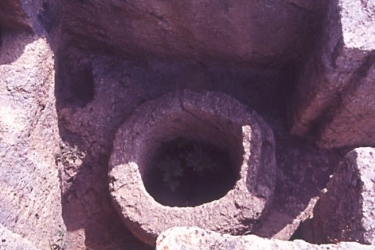Viacrucis Route
The Via Crucis refers to the passage of the life of Jesus Christ that goes from the time he is interrogated and condemned by Pontius Pilate until his crucifixion and death on Mount Calvary (in Jerusalem). Between both places there is a physical distance, route or route that in Jerusalem has been identified with a series of streets or places that receive the name of "Via Dolorosa"
The year was 1518 when Don Fadrique Enríquez de Ribera, Spanish nobleman, Marquis of Tarifa and Mayor of Andalusia, began a pilgrimage route from Bornos to Jerusalem. Once there, count the steps of the Via Dolorosa, 1,321 steps or 997 meters, the same distance from the Palace of Pontius Pilate to Mount Calvario. On his return to Bornos, he calculated the same distance from the gate of the Hieronymite Monastery of Santa María del Rosario to a point where he built a shrine which he called Cruz de Esperilla.
In this way, Don Fadrique Enríquez de Ribera manages to represent a closer and more accessible Via Dolorosa without the need to make a pilgrimage to Jerusalem. This Via Crucis was also carried out simultaneously in his House in Seville (Casa de Pilatos) to the Temple of the Cruz del Campo. In both routes (Bornos and Seville) the distance is somewhat greater than in the original Via Crucis in Jerusalem. We do not know the date on which the tradition of the Via Crucis to the Temple ceased to take place in Bornos, but the writer Doña Frasquita Larrea tells us in her travel book about her attendance at a traditional pilgrimage there on May 4, 1826. The road was lined with crosses and portable altars that marked the different stations. This Route was the origin of one of the most characteristic acts of Holy Week in Spain. Seville and Bornos were the first places where the penitential stations were established, being considered, by many historians, as precursors of the current Holy Week.
Click here for Map of the route











